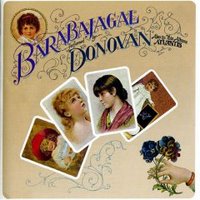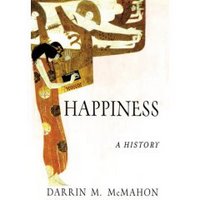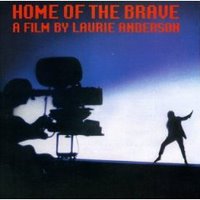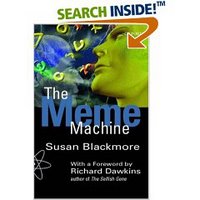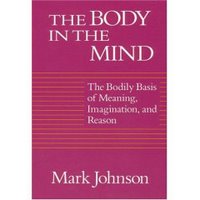The Two Toucans - Autism and Brain Chemistry
They will risk starvation and attack by dangerous predators, under the harshest conditions on earth, all to find true love.
Product Description – March of the Penguins
Never underestimate the human proclivity to anthropomorphize

(to attribute human characteristics and qualities to non-human beings, i.e. animals). I finally saw
March of the Penguins (better late than never) a few days ago. And wow was it hard not to project human emotions on the behavior of those animals. Even the product description (above) refers to the animals overcoming all obstacles to find "true love". The movie itself shows no such thing. Apparently penguins mate annually, pair-bonding only to raise their chick from egg to self-suffiency (about a 1 year process). In other words, each year, they have a different mate, adding up to as many as 30 different mates in a lifetime--far from true love I'd say.
I’m reaching for a new word here—one that describes the behavior in the "lower" animals, the wrinkle of a dogs brow that we associate with frowning, scowling, or being deep in thought. But in the dog, it doesn’t mean he's angry...or thinking. A pre-emotive autonomic response? Hmmm, I shouldn't say it... which came first? the penguin or the egg?
TANGENT: Speaking of animals thinking...I've been reading "
Thinking In Pictures-My Life 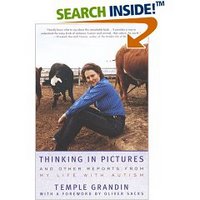 with Autism
with Autism" by Temple Grandin, a book which somehow manages to link the theme of autism in humans with the theme of thinking and language acquisition in animals. Grandin maintains that animals think, but using a different mode of thinking, something similar to the way an autistic person thinks. She calls it "thinking in pictures".
Now here's where it comes into play for me. When I was young I played happily by myself and did not seem to require other friends. My mother called it "self-entertaining". My kindergarten teacher (this was the late '60's) thought I might be retarded because I never spoke. My mother has a "funny" story about that, because I talked all the time at home. The story goes that she asked me why I wasn't talking in school and I said "because you told me never to talk to strangers". Maybe, or maybe I wasn't socially developing at the same pace as other little 5 year olds.
My sister, like me actually was "delayed" in speaking, apparently whispering complete sentences before anyone had heard her say a word. Again the "funny" stories; that I talked enough for both of us, that I wouldn't let her get a word in edge wise; that she was just practicing until she had it just right, etc. And as she grew up, she was said to have a "photographic" memory, visualizing entire pages and just "re-reading" the answer without necessarily understanding it. We were all amazed. As she got older she also displayed a talent for mathematics and computer sciences.
All of this and the system still called us both "normal" and maybe we were (are).
Years later, when we were both adults, my nephew was diagnosed with high-functioning
autism (which some think is the same as asbergers) at a young age. Since he showed none of the negative hollywoodized version of autism (the only one I ever knew about before), I couldn’t help thinking he was somehow misdiagnosed.
Whenever I see him, what I see is a boy focused on something that interests him, and not at all interested in what ever may be going on around him. I so strongly identify with that feeling, that I imagined that he and I were two of kind, only I had somehow escaped the diagnosis. That was…until I saw the toucans:

As my sister tells me, the picture on the right was a color by number picture that he colored in a year ago. Then, a year later he drew from memory the picture on the left. The fascinating part, to me, is not the amazing memory, but rather that he has NOT drawn a toucan. He has drawn areas of color, and noted them (accurately) above, just as the color by number printout had (i.e. 1) dark blue, 2) yellow, etc.).
It was actually these drawings that prompted me to write the essay below "The Opposite of Gestalt". My nephew saw the parts but I don't think they added up to the sum of their parts. It said so much about how different his brain worked from mine. Again, not because he remembered something a year later in such incredible detail, but because of what it said about our brains.
 TANGENT: But spirit animals, aside, I remember a wonderful fictional parrot from Gabriel Garcia Marquez’s masterpiece “One Hundred Years of Solitude” (and also made an appearance in Love in the Time of Cholera). This parrot had lived more than a century and still spoke “pirate” at the most inopportune times. My memory is fuzzy on these points, but that parrot touched something in me because by virtue of his long life span he connected us to times long past. He was, in essence, living history, an animate continuity.
TANGENT: But spirit animals, aside, I remember a wonderful fictional parrot from Gabriel Garcia Marquez’s masterpiece “One Hundred Years of Solitude” (and also made an appearance in Love in the Time of Cholera). This parrot had lived more than a century and still spoke “pirate” at the most inopportune times. My memory is fuzzy on these points, but that parrot touched something in me because by virtue of his long life span he connected us to times long past. He was, in essence, living history, an animate continuity.
 Speaking of Moral Indignation, just saw Good Night and Good Luck, a movie which "the unemployed critic" on Amazon calls "essentially...a victory lap for liberal ideals". This movie somehow managed to leave me both bored and awe-inspired at the same time. What a pleasure to watch the intellect triumph over fear tactics. I think I REALLY needed to see that, a nice quiet shot in the arm. Good job George!
A friend of mine sent me this parody of a pharmaceutical. If all else fails, I can take one of these:
Speaking of Moral Indignation, just saw Good Night and Good Luck, a movie which "the unemployed critic" on Amazon calls "essentially...a victory lap for liberal ideals". This movie somehow managed to leave me both bored and awe-inspired at the same time. What a pleasure to watch the intellect triumph over fear tactics. I think I REALLY needed to see that, a nice quiet shot in the arm. Good job George!
A friend of mine sent me this parody of a pharmaceutical. If all else fails, I can take one of these:
 TANGENT: The Triumph of the Parrot:
Parrot helps catch robbers
Parrot dating service
Parrot jumps ship
What the parrot said to the vicar
TANGENT: The Triumph of the Parrot:
Parrot helps catch robbers
Parrot dating service
Parrot jumps ship
What the parrot said to the vicar
 It’s really just a blog, so I found the site hard to navigate, but once I started browsing I couldn’t stop. It is way more fun that the stores on La Brea because you can absorb so much in such a short time. These are prototypes, designs, dreams, realities…plastic blobs, an “unconformist bookcase”. There is even an “extendable table that uses two wing-type extensions that 'lift' symmetrically creating room to comfortably seat six people”.
On these pages MUST be the new Nelsons, Parsons, van de Roes.
It’s really just a blog, so I found the site hard to navigate, but once I started browsing I couldn’t stop. It is way more fun that the stores on La Brea because you can absorb so much in such a short time. These are prototypes, designs, dreams, realities…plastic blobs, an “unconformist bookcase”. There is even an “extendable table that uses two wing-type extensions that 'lift' symmetrically creating room to comfortably seat six people”.
On these pages MUST be the new Nelsons, Parsons, van de Roes.





